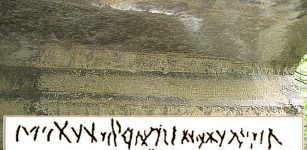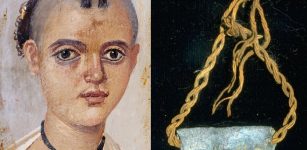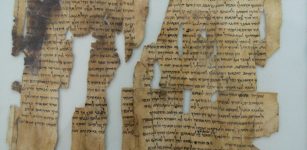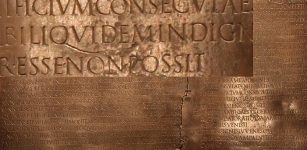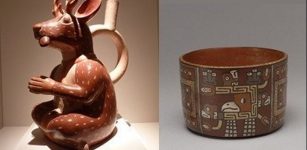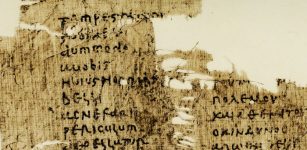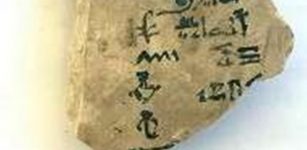Oldest Gospel About Jesus’s Childhood Deciphered By Papyrologists
Jan Bartek - AncientPages.com - The discovery of the papyrus fragment P.Hamb.Graec. 1011 at the Hamburg Carl von Ossietzky State and University Library is a significant milestone in early Christian studies. After decades of remaining unnoticed, experts Dr. Lajos Berkes and Professor Gabriel Nocchi Macedo have deciphered the ancient manuscript, identifying it as the earliest surviving copy of the Infancy Gospel of Thomas.
The papyrus fragment, which has been housed in a library in Hamburg, Germany, is a significant historical find. Researchers have established that the text dates back to the fourth to fifth centuries, making it an early copy of the Infancy Gospel of Thomas. This ancient document provides insights into the accounts surrounding Jesus' childhood. Credit: Staats- und Universitätsbibliothek Hamburg/Public Domain Mark 1.0
This gospel, which dates back to the early days of Christianity, narrates episodes from Jesus's childhood and is considered one of the biblical apocrypha—writings that were not included in the Bible but were widely popular and circulated in Antiquity and the Middle Ages. Before this discovery, the oldest known Greek version of the Gospel of Thomas was a codex from the 11th century, despite the gospel itself being estimated to have been written in the 2nd century AD.
Identifying this papyrus fragment as the earliest surviving copy of the Infancy Gospel of Thomas is a significant breakthrough, providing scholars with invaluable insights into the early development and dissemination of Christian literature and beliefs.
“The fragment is of extraordinary interest for research,” says Lajos Berkes, lecturer at the Faculty of Theology at Humboldt-Universität. “On the one hand, because we were able to date it to the 4th to 5th century, making it the earliest known copy. On the other hand, because we were able to gain new insights into the transmission of the text.”
“Our findings on this late antique Greek copy of the work confirm the current assessment that the Infancy Gospel according to Thomas was originally written in Greek,” says Gabriel Nocchi Macedo from the University of Liège in a press release.
The fragment in question is a papyrus measuring approximately 11 x 5 centimeters, containing thirteen lines of Greek letters, with around 10 letters per line. It originates from late antique Egypt. Initially, this papyrus went unnoticed for an extended period as its content was deemed insignificant. According to Berkes, due to the seemingly clumsy handwriting, it was initially thought to be a part of an everyday document, such as a private letter or a shopping list.
“We first noticed the word Jesus in the text. Then, by comparing it with numerous other digitized papyri, we deciphered it letter by letter and quickly realized that it could not be an everyday document,” he says.
Credit: José Luiz Bernardes Ribeiro - CC BY-SA 4.0
The two researchers assume that the copy of the Gospel was created as a writing exercise in a school or monastery, as indicated by the clumsy handwriting with irregular lines, among other things. The few words on the fragment show that the text describes the beginning of the 'vivification of the sparrows' episode from Jesus' childhood, considered the "second miracle" in the apocryphal Gospel of Thomas. In this episode, Jesus plays at a rushing stream and molds twelve sparrows from clay. When his father, Joseph, rebukes him for doing such things on the holy Sabbath, the five-year-old Jesus claps his hands and brings the clay figures to life.
See also: More Archaeology News
The use of other key terms, such as 'crowing' or 'branch' by papyrologists in their search through early Christian texts led to the recognition that the fragment was a copy of the Infancy Gospel, according to Thomas. "From the comparison with already known manuscripts of this Gospel, we know that our text is the earliest. It follows the original text, which, according to the current state of research, was written in the 2nd century A.D.," the scientists explain.
Written by Jan Bartek - AncientPages.com Staff Writer




